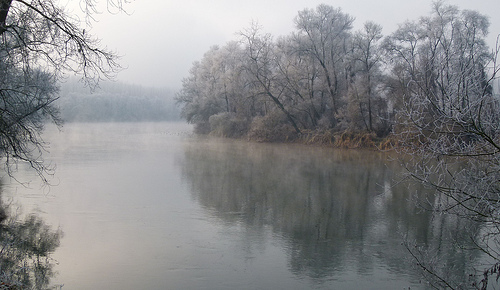
In a new study recently published on the journal Science of the Total Environment a team of scientists (among them CMCC researchers R. Vezzoli, P. Mercogliano, A. L. Zollo from REMHI Division) investigated the impacts of climate change on Po River discharges. Continuous climate and hydrological projections up to 2100 under RCP4.5 and RCP8.5 scenarios have been used; climate projections are obtained nesting the regional climate model COSMO-CLM into the global climate model CMCC-CM.
Results show that under both RCPs, temperature is expected to increase on the whole Po River basin and in all the seasons; the most significant changes in precipitation and discharges occur in summer, when the reduction of precipitation leads to an increase in low flow duration and occurrence likelihood, and in autumn and winter where precipitation shows a positive variation increasing the high flows frequency.
The abstract of the paper:
The impacts of climate change on Po River discharges are investigated through a set of climate, hydrological, water-balance simulations continuous in space and time. Precipitation and 2 m mean temperature fields from climate projections under two different representative concentration pathways, RCP4.5 and RCP8.5, have been used to drive the hydrological model. Climate projections are obtained nesting the regional climate model COSMO-CLM into the global climate model CMCC-CM. The bias in climate projections is corrected applying the distribution derived quantile mapping. The persistence of climate signal in precipitation and temperature after the bias correction is assessed in terms of climate anomaly for 2041–2070 and 2071–2100 periods versus 1982–2011. To account for the overall uncertainty of emission scenarios, climate models and bias correction, the hydrological/water balance simulations are carried out using both raw and bias corrected climate datasets. Results show that under both RCPs, either considering raw and bias corrected climate datasets, temperature is expected to increase on the whole Po River basin and in all the seasons; the most significant changes in precipitation and discharges occur in summer, when the reduction of precipitation leads to an increase in low flow duration and occurrence likelihood, and in autumn and winter where precipitation shows a positive variation increasing the high flows frequency.
Read the integral version of the paper:
Vezzoli R., Mercogliano P., Pecora S., Zollo A. L. , Cacciamani C.
Hydrological simulation of Po River (North Italy) discharge under climate change scenarios using the RCM COSMO-CLM
2015, Science of The Total Environment, vol.521-522, pp 346-358, DOI: 10.1016/j.scitotenv.2015.03.096


